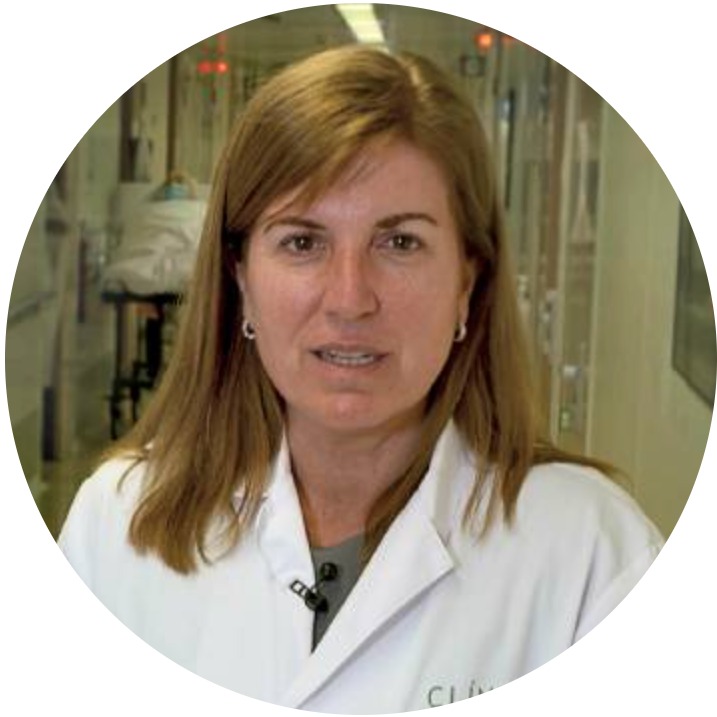11 October, 2022
Valvular diseases and arrhythmias, how to diagnose and treat them
The heart is a fundamental organ for our life. He is responsible for pumping the blood that carries oxygen and nutrients to all corners of our bodies. Therefore, its correct operation is vital. Some symptoms such as fatigue or an uneven pulse can warn us that there is a problem with this organ. Thanks to modern diagnostic imaging techniques, it is now possible to confirm these suspicions or reveal problems that may be present, such as valve disease or arrhythmia, quickly and easily.
“There are different imaging techniques that allow us to see the anatomy of the heart and, above all, cardiac function because they allow us to see its normal movement,” explains Dr Marta Sitges, director of the Cardiovascular Institute of the Barcelona Clínic and cardiologist at barnaclinic+.
“There are different imaging techniques that allow us to see the anatomy of the heart and especially cardiac function because they allow us to see its normal movement”
Dr Marta Sitges, director of the Cardiovascular Institute of the Barcelona Clínic and cardiologist at barnaclinic+
CARDIOLOGY DIAGNOSIS BY IMAGING, DIFFERENT TESTS WITH DIFFERENT GOALS
The most used test in cardiology is echocardiography. “Thanks to it, it is possible to accurately see the flows inside the heart and through the valves,” continues Dr Sitges. This technique is an exploration that with the emission of ultrasounds allows to study the dimensions and functionalities of the heart in a non-invasive way. It is performed without radiation and contrast, so it is completely harmless to the patient.
“This technique is essential for the diagnosis and follow-up of patients with valve pathology. It is also a fundamental technique in patients with ischemic heart disease since it gives us prognostic information with the study of ventricular function”, points out Dr Bárbara Vidal, head of the Cardiac Imaging Section at the Barcelona Clínic and cardiologist at barnaclínc+, who adds that echocardiography is also useful in the study of cardiomyopathies, of patients in whom valvular disease is suspected after detecting a murmur, and in some electrocardiogram disorders such as left bundle branch block.
“Echocardiography is essential for the diagnosis and follow-up of patients with valvular pathology. It is also a fundamental technique in patients with ischemic heart disease since it gives us prognostic information with the study of ventricular function”
Dr Bárbara Vidal, head of the Cardiac Imaging Section at the Barcelona Clínic and cardiologist at barnaclínc+
Another diagnostic imaging technique used in cardiology is cardiac resonance and computed tomography or scanner, which offer complementary information. Dr Vidal points out how stress tests are also important, in which the patient has to walk on a treadmill like those in a gym while both their blood pressure and the electrocardiogram are controlled, progressively increasing both the speed like the slope.
“With these stress tests it is possible to diagnose patients with chest pain, also to recommend physical exercise in patients with ischemic heart disease and finally to study patients with valvular disease, to see how the valves behave during effort and certain arrhythmias with the physical exercise” adds Dr Vidal.
WHAT ARE VALVE DISEASES?
Diseases of the heart valves affect the normal functioning of this organ. “The function of these structures is to properly direct the flow of blood circulation within the heart and towards the rest of the body,” says Dr Sitges. However, for various reasons these valves can stop working properly. “A narrowing can occur that prevents blood from flowing out or they can also close improperly, affecting blood flow and causing an overload of the heart,” continues Dr Marta Sitges.
“A narrowing can occur that prevents blood from flowing out or they can also close improperly, affecting blood flow and causing an overload of the heart”
Dr Marta Sitges
Mitral regurgitation: diagnosis and treatment
Mitral regurgitation is one of these valvular diseases, which consists of the loss of contact of the mitral leaflets, being one of the most common. This produces a hole through which the blood returns backwards, overloading the atrium and the left ventricle, preventing the proper functioning of the heart. “This pathology can produce symptoms of heart failure if it is not treated properly and its diagnosis occurs after a suspicion based on the symptoms explained to the patient, after an auscultation of the murmur and confirmed with echocardiography,” adds Dr Sitges.
Once the diagnosis of mitral regurgitation is confirmed, and always based on the symptoms presented by the patient, the cardiologist decides on the most appropriate treatment. The two main options are surgical or percutaneous intervention.
“The surgical intervention consists of a surgery that can be performed in a conventional open way or with a minimally invasive approach, the use of robots being also possible. On the other hand, percutaneous intervention consists of the implantation of devices that can help us repair the valve or replace it completely”, continues Dr Marta Sitges.
Aortic valve stenosis
Along with mitral regurgitation, another of the most frequent valve diseases is aortic valve stenosis. It mainly affects two large subgroups, each with its own characteristics.
The most abundant occur among the population over seventy years of age. “In this population, the reason for the disease is a progressive narrowing of the aortic valve, caused by calcification, progressively appearing dyspnea and inability to make efforts. It is a disease acquired with age and echocardiography is essential for its diagnosis”, Dr Bárbara Vidal points out.
But this disease can also affect younger people. “In these cases, it is due to a bicuspid aorta, which is a congenital disease. In these cases, the symptoms appear before”, Bárbara Vidal continues explaining.
ARRHYTHMIA, HEART RHYTHM ALTERATIONS AND HOW THEY ARE DIAGNOSED
Another large group of pathologies that affects the heart is arrhythmias, which consist of heart rhythm disturbances. In this case, there is a wide spectrum of severity, from arrhythmias with a very good prognosis to other malignant ones that can endanger the life of the patient, triggering what is known as sudden death.
“In benign arrhythmias, the risk of sudden death is much lower, but we should not be confused since they are not so benign and can trigger failure and also cause death. The malignant ones have been named this way because they quickly degenerate into atrial fibrillation and cause instant death”, Dr Marta Sitges explains.
For the diagnosis of these arrhythmias, the cardiologist is first based on clinical suspicion, to try to explain palpitations perceived by the patient. “They can be diagnosed with an electrocardiogram or with a Holter, which is an electrocardiogram that is performed for 24 hours in a row. But it may also be necessary to carry out more invasive studies, such as an electrophysiological study, to reach the final diagnosis”, adds Dr Bárbara Vidal.
“Arrhythmias can be diagnosed with an electrocardiogram or a Holter monitor, but it may also be necessary to perform more invasive studies, such as an electrophysiological study, to reach the final diagnosis”
IT MAY INTEREST YOU…
– More info about Arrhythmias
Cardiac resynchronization therapy
In these pathologies that affect the rhythm of the heart, cardiac resynchronization therapy is very important, with which it is sought to restore the mechanical synchrony in the contraction of the heart. “In some subjects with diseases of the myocardium, heart muscle, and electrical problems, there is a desynchrony in the contraction of the heart,” explains Dr Marta Sitges, who points out that some of the symptoms that this can cause are fatigue, fatigue or heart failure.
“In some subjects with diseases of the myocardium, heart muscle, and with electrical problems, there is a desynchrony in the contraction of the heart”
Dr Marta Sitges
“This therapy is also proposed in patients with ventricular dysfunction, in whom the left ventricle has lost strength and this causes a conduction disorder, the most frequent being left bundle branch block”, adds Dr Bárbara Vidal. In any case, this therapy consists of the implantation of a pacemaker that allows the movement of the heart to return to being synchronous and harmonic.




 “There are different imaging techniques that allow us to see the anatomy of the heart and especially cardiac function because they allow us to see its normal movement”
“There are different imaging techniques that allow us to see the anatomy of the heart and especially cardiac function because they allow us to see its normal movement”